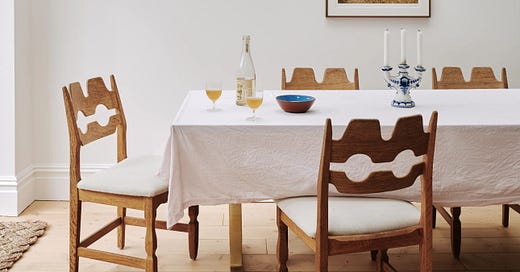Room Recipe: A Scandinavian Dining Room in London
A step-by-step guide to translating inspiration into real life
Welcome back to Room Recipe, a new column on À La Carte where we stare at an image of a room we love for a very long time, then break down its “ingredients” into specific items and themes. The goal is never to copy, but instead to get to the bottom of why certain rooms just *work* and to understand how we can translate that inspiration into real life. L…
Keep reading with a 7-day free trial
Subscribe to À La Carte to keep reading this post and get 7 days of free access to the full post archives.




